
Renovation of historic station among designs unveiled for California's high-speed rail
Designs by studios Foster + Partners, Arup and Page & Turnbull have been unveiled for the first four train stations of the California High-Speed Rail line, slated to be the first high-speed rail system in the US.
Foster + Partners and Arup contributed to the design of four stations for the California High-Speed Rail, which will connect San Diego in the south of the state with Sacramento in the north, as well as a number of cities in between.

As part of Phase 1 of the project, which will run from San Francisco to Los Angeles, the stations will be located in Merced, Fresno, Kings Tulare and Bakersfield, with initial designs announced last year.
According to Foster + Partners, the four Central Valley stations will be linked by an architectural language "that reflects the sustainable ethos of the wider project" and will feature "soaring" canopies.

"We are developing an architectural language for the four Central Valley stations, including soaring canopies that draw in fresh air and shield waiting passengers from harsh sunlight," said Foster + Partners head of studio Stefan Behling. "The station design reflects the sustainable ethos of the wider project."
Renderings show each station's exteriors and interiors capped by ripped volumes of metallic bronze or matte white, integrated with louvred wood and stone walls, heavy columns, and pergola-style roofs hanging over large entrances.
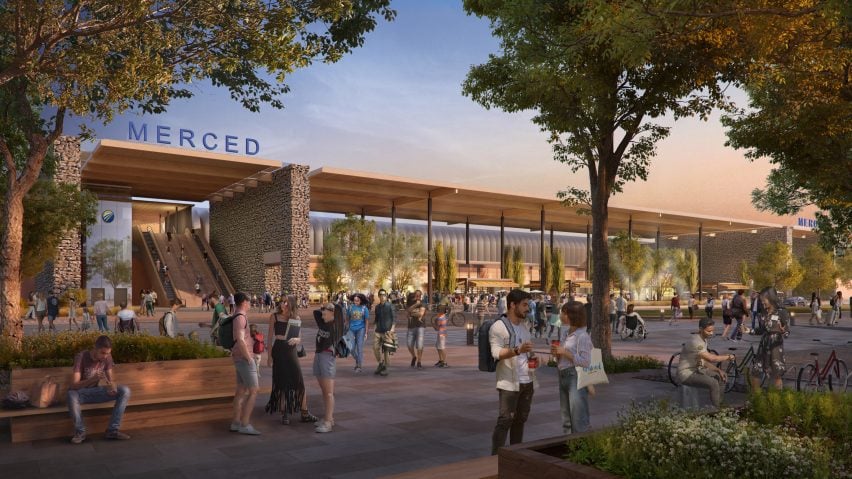
The project's Fresno station will include an elevated pedestrian crossing connecting Chinatown and Downtown Fresno Station near Mariposa Street, as well the restoration of the historic depot on site conducted by US architecture studio Page & Turnbull.
Built in 1872 and listed in the National Register of Historic Places, the depot is a Queen Anne-style building with slate bellcast hip-roof and cupolas and a structure of red brick.
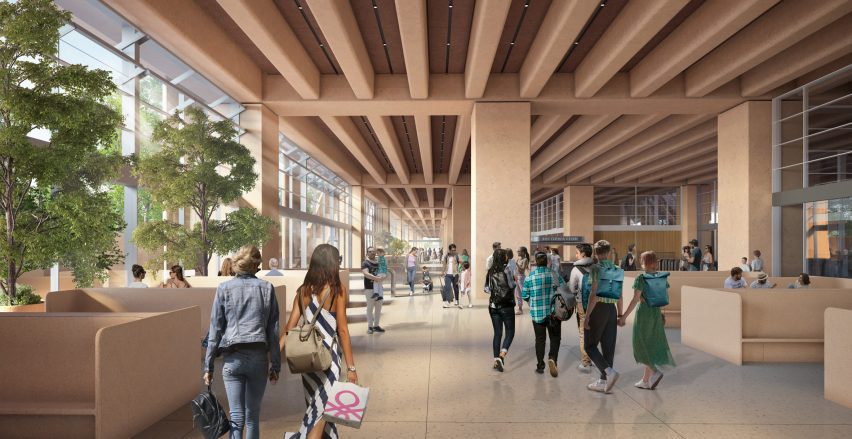
Updates to the station will include bringing the building up to fire, life-safety, structural, seismic and accessibility codes, as well as the restoration of architectural features so that it can serve as an "ultramodern transportation center".
"The historic depot will be an iconic and economically vital part of Downtown Fresno and of the high-speed rail system," said Page & Turnbull president Peter Birkholz.

Located north of Fresno, the Merced station will also include a pedestrian bridge linking the city's downtown, and serve as the main connection to the greater San Francisco Bay Area.
A "flexible outdoor plaza" on 16th Street is also included in the plans.
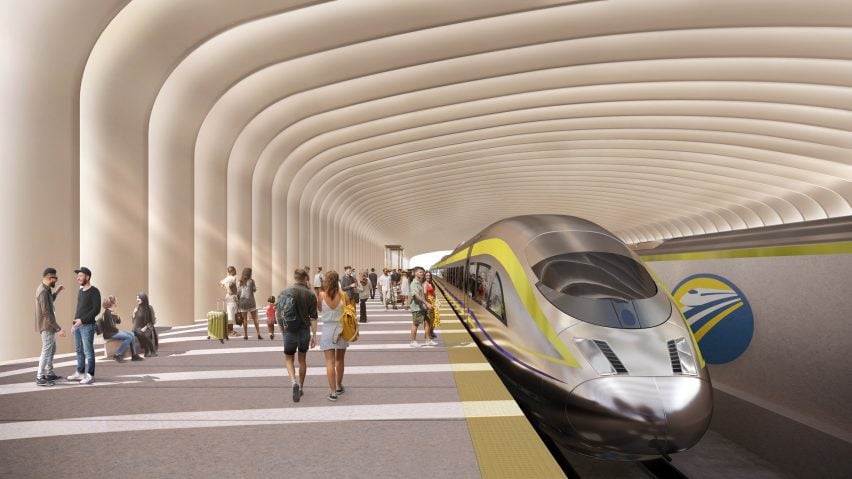
"Building on the historical link between Merced and Yosemite Valley, this city with a rapidly growing university and college will benefit from high-speed rail connections to the Central Valley and the future connection to the San Francisco Bay Area," said the team.
The Kings Tulare station is pictured with an expansive outdoor plaza and is designed to create "a streamlined experience" for bus, car and bicycle traffic, with its services located in a rectangular volume directly beneath its tracks.
As the southern terminus of the line and the connection to Los Angeles and Anaheim, the Bakersfield station will feature a variety of shaded outdoor plazas, with renderings picturing outdoor amenities beneath elevated tracks.
"The design creates a linear park that runs underneath a new viaduct, directly connecting downtown Bakersfield and the Kern River Corridor with a variety of shaded outdoor public spaces and recreation facilities," said the team.
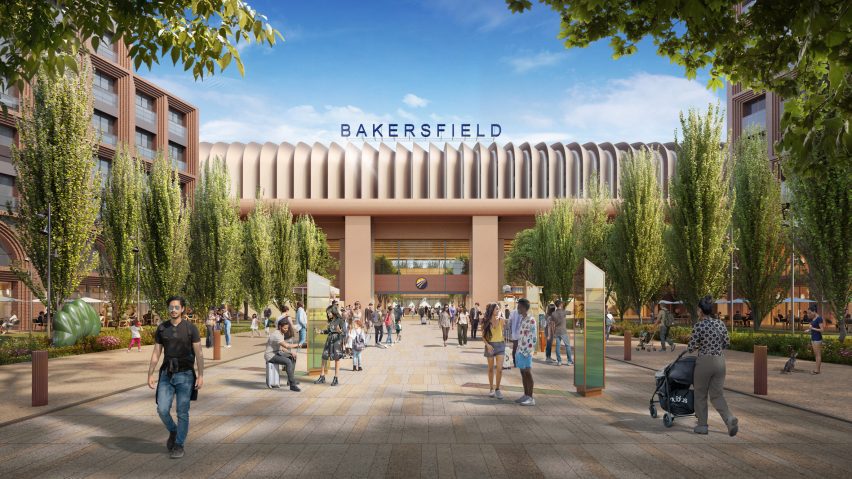
Once completed the 119-mile Central Valley line will connect San Francisco to Los Angeles in less than three hours, according to the team.
Up to 24 stations are planned for the greater California High-Speed Rail, linking more than 800 miles of track. Funding was granted to the project in 2008 after decades of advocacy.
First proposed in 1979 under Governor Jerry Brown, California's high-speed rail has since suffered a number of funding setbacks and controversies, resulting in the current two-phase construction plan for the rail.
Phase 1 of the project refers to the completion of the 520-mile San Francisco to Anaheim route, while Phase 2 refers to extensions that will connect Sacramento and San Diego.
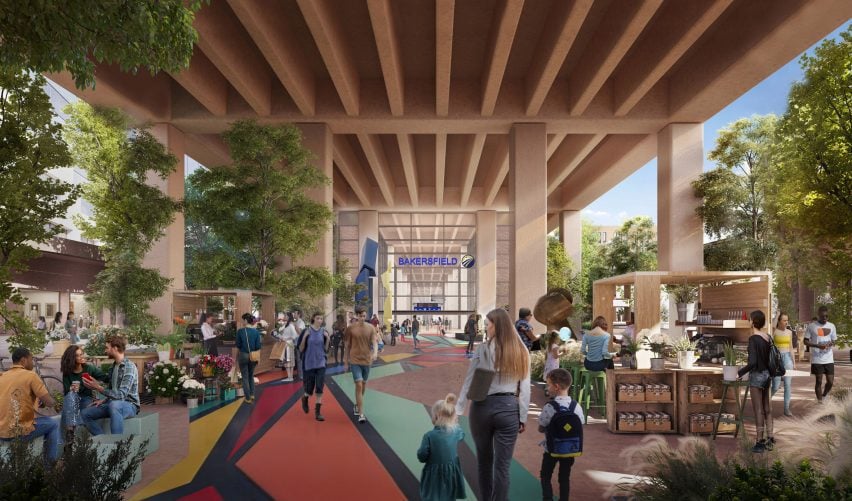
According to the New York Times, due to "political compromises", the project's budget has bloated to an estimated $100 billion with "little chance" of completion – although construction on viaduct structures and overcrossing is underway according to updates from the California High-Speed Rail Authority, a body tasked with facilitating the project.
As of now, service of the Central Valley line is expected to start in 2030.
The opportunity to learn more about the rail stations, see 3D renderings and speak with rail authorities will be available to the public during the California State Fair in Sacramento running from 12 to 28 July, according to Foster + Partners.
Elsewhere in the US, a historic train station in Detroit recently received a renovation, while New York's subway station risks "falling behind" after budget cuts.
The images are courtesy of Foster + Partners